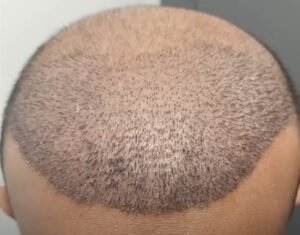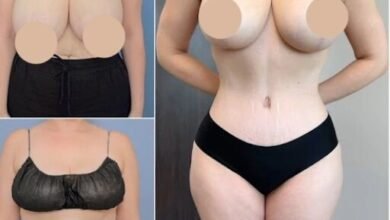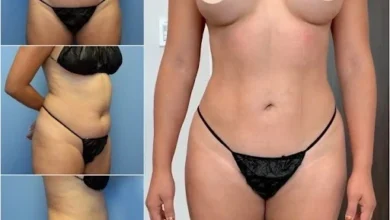
Hair loss is a common issue that affects millions of people worldwide. For those struggling with hair thinning, especially at the crown of the head, hair transplants can be a game-changing solution. However, there are several myths surrounding Crown Hair Transplant in Abu Dhabi that can cause confusion and hesitation among potential candidates. In this article, we’ll address and debunk these myths to provide a clearer understanding of the procedure, its benefits, and its limitations.
Myth 1: Hair Transplants Are Only for the Bald
The Reality: Hair Transplants Can Treat Thinning, Not Just Baldness
One of the most common myths about crown hair transplants is that they are only for individuals who are completely bald. In reality, hair transplants are effective for anyone experiencing hair thinning or balding in specific areas, including the crown. The procedure works by transplanting hair follicles from dense areas, like the back or sides of the head, to thinning or balding regions.
If you notice thinning hair or a receding hairline, you could be a good candidate for a crown hair transplant, even if you aren’t fully bald. It’s essential to consult with a hair restoration specialist to determine whether a transplant is right for your specific situation.

Myth 2: The Results Are Immediate
The Reality: Hair Transplant Results Take Time
While a hair transplant can significantly improve the appearance of your crown, it’s important to understand that the results are not immediate. After the procedure, the transplanted hair follicles typically go through a shedding phase, where the hair may fall out before new growth begins. This is entirely normal and part of the hair regrowth process.
New hair typically starts growing around 3 to 4 months post-transplant, with full results becoming noticeable after 9 to 12 months. Patience is key when it comes to crown hair transplants, and expecting instant results can lead to disappointment.
Myth 3: Hair Transplants Look Unnatural
The Reality: Modern Techniques Produce Natural-Looking Results
Some people worry that a crown hair transplant will result in an unnatural appearance, where the transplanted hair looks noticeably different from the surrounding hair. However, modern hair restoration techniques, like Follicular Unit Extraction (FUE) and Follicular Unit Transplantation (FUT), ensure that the results are as natural-looking as possible.
These advanced techniques involve transplanting individual hair follicles in a way that mimics the natural growth pattern of your hair, leading to a seamless blend with your existing hair. When done correctly by a skilled surgeon, the results of a crown hair transplant can look completely natural, enhancing your overall appearance without any telltale signs of surgery.
Myth 4: Hair Transplants Are Painful and Require Long Recovery Times
The Reality: The Procedure Is Minimally Invasive with Short Recovery Times
Many people believe that hair transplants are painful and require long recovery times, but this isn’t true. While there may be some discomfort during the procedure, modern hair transplant methods are minimally invasive. Local anesthesia is used to numb the scalp, ensuring that you remain comfortable throughout the process.
The recovery period is typically short, with most patients returning to their normal activities within a few days. While there may be mild swelling or redness in the treated areas, these side effects generally subside within a week or two. It’s important to follow post-operative care instructions to minimize any discomfort and ensure optimal healing.
Myth 5: Hair Transplants Are Only Effective Once Hair Loss Is Severe
The Reality: Early Intervention Can Yield Better Results
Another common myth is that hair transplants are only effective when hair loss has reached an advanced stage. In fact, the earlier you seek treatment for crown hair thinning, the better the results can be. Early intervention allows the surgeon to target specific thinning areas and ensure that enough donor hair is available for the procedure.
If you wait too long, you may have fewer options for successful transplantation, as the donor hair may be limited, or the hair loss may have become too widespread. By addressing crown hair thinning early, you can maintain a more natural, fuller look with better results over time.
Myth 6: Transplanted Hair Requires Special Care
The Reality: Transplanted Hair Grows Like Normal Hair
Once the transplanted hair follicles settle into their new location, they begin to grow like normal hair. This means they don’t require any special treatment or care. You can wash, style, and treat the transplanted hair just like your natural hair.
However, in the immediate post-transplant phase, it’s crucial to follow your surgeon’s aftercare instructions carefully to ensure the best results. This may include avoiding direct sunlight, not scratching or touching the transplant site, and taking prescribed medications to reduce swelling and promote healing. After the initial healing period, the transplanted hair will blend seamlessly with your natural hair.
Myth 7: Only Younger People Can Benefit from Hair Transplants
The Reality: Age Is Not a Barrier for Hair Transplants
While it’s true that many people opt for hair transplants in their 20s or 30s, age is not a limiting factor when it comes to crown hair transplants. In fact, individuals in their 40s, 50s, and even 60s can benefit from this procedure, as long as they are in good overall health.
That being said, older individuals may experience slower hair growth after the procedure due to the natural aging process. However, hair transplants can still provide noticeable improvements in the appearance of thinning or balding areas. The key to success is ensuring that the donor hair is still viable and that the individual is a good candidate for the procedure.
Myth 8: Hair Transplants Are Permanent, and You Will Never Need Another One
The Reality: Hair Transplants Can Be Long-Lasting but Not Guaranteed for Life
While crown hair transplants offer long-lasting results, they are not necessarily permanent. The transplanted hair is resistant to the hormone that causes hair loss (DHT), which is why it continues to grow in its new location. However, other hair on the scalp that hasn’t been transplanted may continue to thin or fall out over time due to genetics or aging.
In some cases, patients may require follow-up procedures or touch-ups to maintain their desired appearance as they age. It’s important to have realistic expectations and understand that hair loss is a progressive condition, even after a successful transplant.
Myth 9: Hair Transplants Are Only for Men
The Reality: Hair Transplants Are Effective for Both Men and Women
While hair transplants have historically been associated with men, women can also benefit from crown hair transplants. Women experiencing hair thinning, particularly at the crown or along the hairline, can see dramatic improvements from this procedure.
Female pattern hair loss is different from male pattern baldness, but hair transplants can still provide a solution for women struggling with thinning or balding in the crown area. A personalized treatment plan is key to achieving the best results for female patients.
Conclusion
Crown hair transplants are a highly effective and minimally invasive procedure that can restore volume, coverage, and confidence for those suffering from hair loss. However, numerous myths surrounding the process can create confusion and prevent people from seeking this treatment. By debunking these common misconceptions, it’s clear that hair transplants can offer natural, long-lasting results for both men and women, regardless of age or the severity of hair loss.



